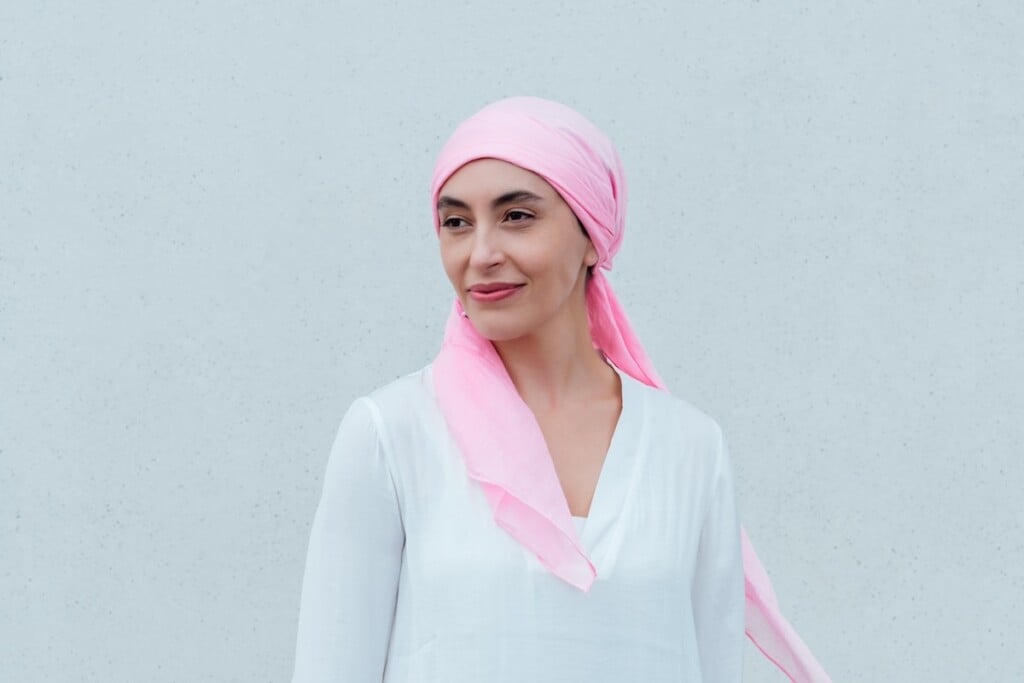After Breast Cancer
Medicine has scored remarkable gains in the battle against this scourge, but patients should understand the challenges treatment brings.

Here’s the good news: Breast cancer has never been more survivable. According to the American Cancer Society, when diagnosed in the “localized” stage (early, when the malignancy hasn’t left the breast tissue), it has a nearly 99 percent survival rate. According to data collected by the National Cancer Institute, breast-cancer mortality in the U.S. dropped 44 percent from 1989 to 2023.
Says Marcella Fornari, D.O., a specialist in breast diseases and surgery at Morristown Medical Center: “That improved survival rate is in large part due to better screening technology. The three-dimensional mammogram becoming standard—as opposed to the older two-dimensional ones—has helped a ton. In addition, higher awareness helps tremendously. We speak about women’s health with a lot more ease than we did 20 or 30 years ago.”
Even an aggressive cancer is treatable if it’s caught early, says Dr. Fornari, adding that “treatment options keep getting better. We can modify and tailor our treatments to each individual type of breast cancer. The HER2 positive medications, for instance, have been revolutionary.” HER2, or human epidermal growth factor receptor 2, is a protein found on cells. If the cancer is positive for that protein, the patient can be treated with antibody medications in addition to chemotherapy to fight the disease more effectively. For individuals with “triple-negative” breast cancer, which tests negative for estrogen and progesterone receptors and the HER2 protein and is considered more aggressive than other types of breast cancer, immunotherapy can help boost the immune system to fight the cancer.
But that success begs the question: What should you expect after breast cancer treatment? What happens as you move through the remission and recovery stages?
EFFECTS OF ANTI-HORMONE THERAPY.
The most common form of breast cancer is “hormone-sensitive,” in which the cancer cells have receptors for hormones such as estrogen and progesterone, causing them to grow and spread. Among the main treatments for this disease are antihormone or antiestrogen therapies, which block those hormone receptors. The medications, often used in conjunction with surgery or as a preventive measure to help stop cancer from returning after treatment, are taken orally for five to ten years. “They cause menopausal symptoms,” says Dr. Fornari. “Particularly in patients who are premenopausal or perimenopausal, it can be jarring, because they feel like they’re thrown directly into menopause.” These symptoms can include hot flashes, thinning of hair, vaginal dryness and joint stiffness. “Patients complain about insomnia as well,” says the doctor.
How to manage these effects? Exercise and weight management can help. If you’re feeling stiff, for instance, not moving will make your muscles lock up more, and strength training in particular can help with these symptoms. “Hot flashes are common, and unfortunately difficult to treat,” says Dr. Fornari. “Sometimes taking vitamin E or black cohosh by mouth can help. If symptoms are very severe, there are also prescription options.” Something else to keep in mind: women on certain estrogen inhibitors are at a greater risk of decreased bone density, which can cause problems with osteopenia or osteoporosis. Doctors will monitor bone density, and vitamin D and calcium supplementation may be recommended to promote healthy bone growth.
LONG-TERM EFFECTS OF CHEMOTHERAPY.
Consisting of drugs that inhibit cell division and kill fast-growing cells, chemotherapy treatment has immediate side effects that are well known— including nausea, hair loss and fatigue. The doctor offers reassurance: “For most patients, once they stop the chemo, these side effects go away. How long that takes depends on the patient.”
One possible long-term side effect is neuropathy. The doctor explains: “It’s nerve damage that can cause numbness and tingling, particularly in the fingers and toes.” This symptom also tends to fade with time, but some patients “always have a little bit of underlying neuropathy after treatment,” says the doctor. It can be treated with physical therapy, other medications and occasionally acupuncture. Another symptom that lingers: “The chemo brain fog is a very real thing,” says Dr. Fornari. The American Cancer Society suggests that keeping to a routine and staying physically active, as best as you can, can manage the symptoms of that brain fog, and “brain exercise” such as learning something new or doing word puzzles can help reduce it. The best cure, though, says the doctor, is time. “People really don’t have patience with themselves,” she says. “They want to go back to ‘normal’ right away. You need to give your body time to recover from what it went through.”
Certain chemotherapy drugs are also associated with a risk of cardiac damage, and radiation therapy can have that effect too—rarely. “Thankfully we don’t see it very much,” says Dr. Fornari. “It depends on whether you have a predisposition to cardiac problems. If you have risk factors, or if you’re going on a chemo drug that could be cardiotoxic, we’ll send you to a cardiologist, do echocardiograms [specialized ultrasounds] of your heart beforehand and monitor you every step of the way.”
THE IMPACTS OF SURGERY.
The aftermath of a breast-cancer operation, no matter how big or small, often includes either pain or a loss of sensation at the incision site. “For the most part, this pain goes away within a year of the surgery,” says Dr. Fornari. “I also advise my patients to do lots of massaging of the area. Work at it like you’re massaging a knot in your shoulder to break up that scar tissue, and you’ll have less pain.” Women who opt for full reconstruction after a mastectomy often report that the new lack of sensation takes time to adjust to. “You have something that feels foreign sitting on your body,” says the doctor. “It can feel weird. There’s also an emotional component. If someone goes through a mastectomy, even with the best reconstruction in the world, she’s still going to look different and feel different. She might be a little numb. You need to get used to your own body again, and that’s hard. I always tell my patients that the pain and recovery aren’t as bad as they fear.”
Also a risk after surgery is lymphedema, or a swelling (often in the arms) caused by damaged lymph nodes. Breast-cancer surgery that also removes lymph nodes under the arms increases the likelihood of this condition, as does radiation that targets the area. “We are getting better at not doing surgery to those axillary areas, so lymphedema is becoming less of a risk,” says Dr. Fornari. “If we see it developing, we can send people to lymphedema-specific physical therapists. There are special massages and compression sleeves that can aid with swelling and lymph drainage,” she explains.
THE MENTAL TOLL.
No matter how old someone is or at what stage the disease is caught, going through cancer treatment is traumatic. “Women ask me all the time—‘When am I going to get back to normal for my kids?’ Or ‘When can I go back to work?’” says Dr. Fornari. “I tell them that recovery takes time. Look at what your body has already done and fought off. Give yourself breathing room. You’ll get there.”

